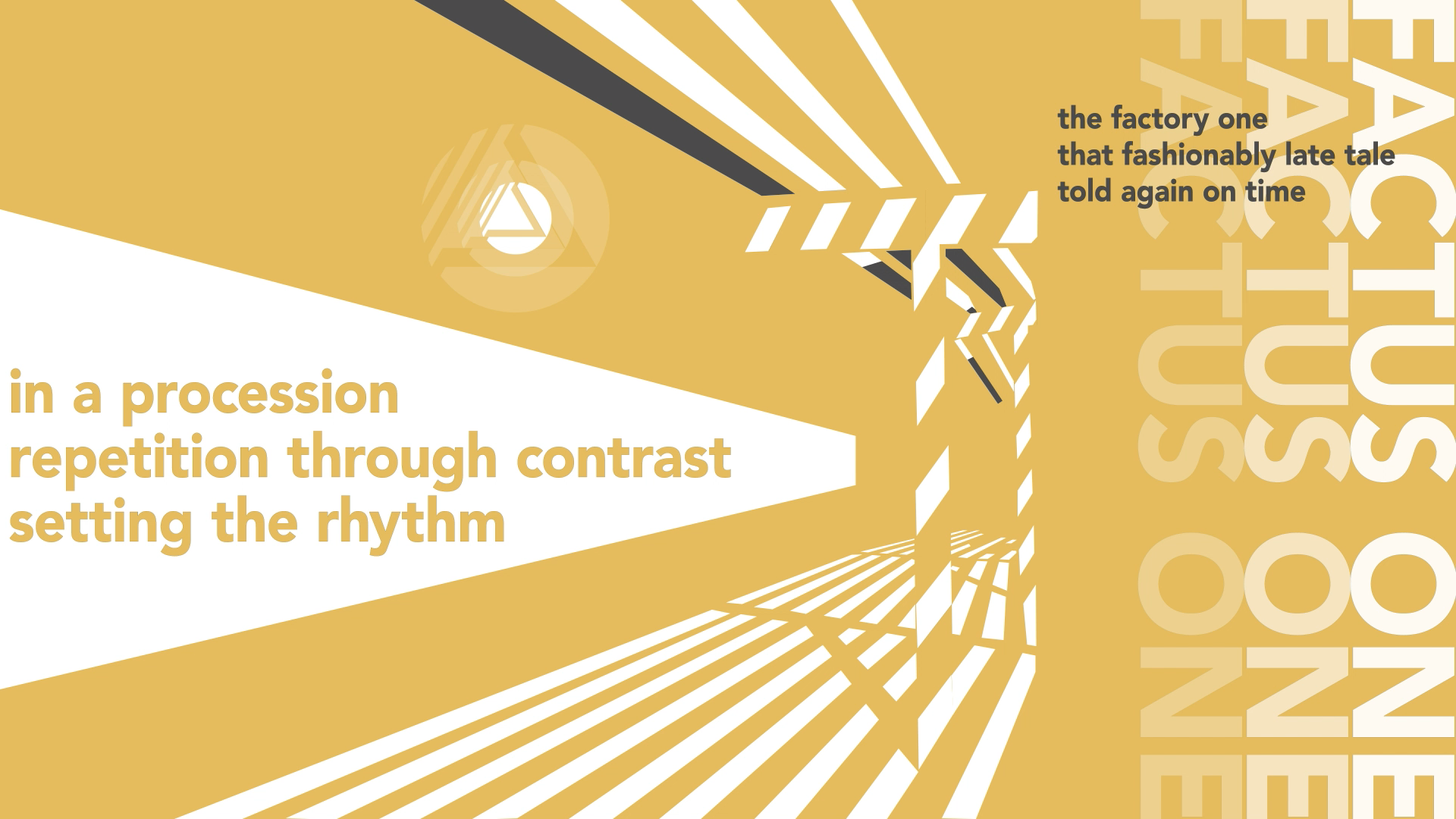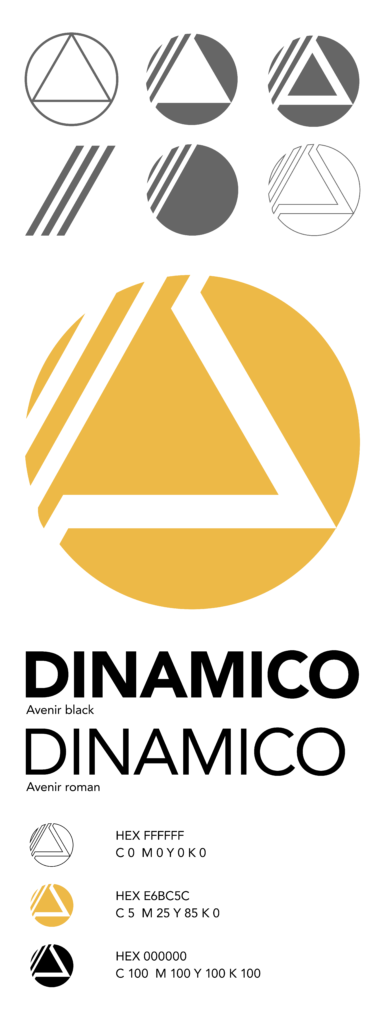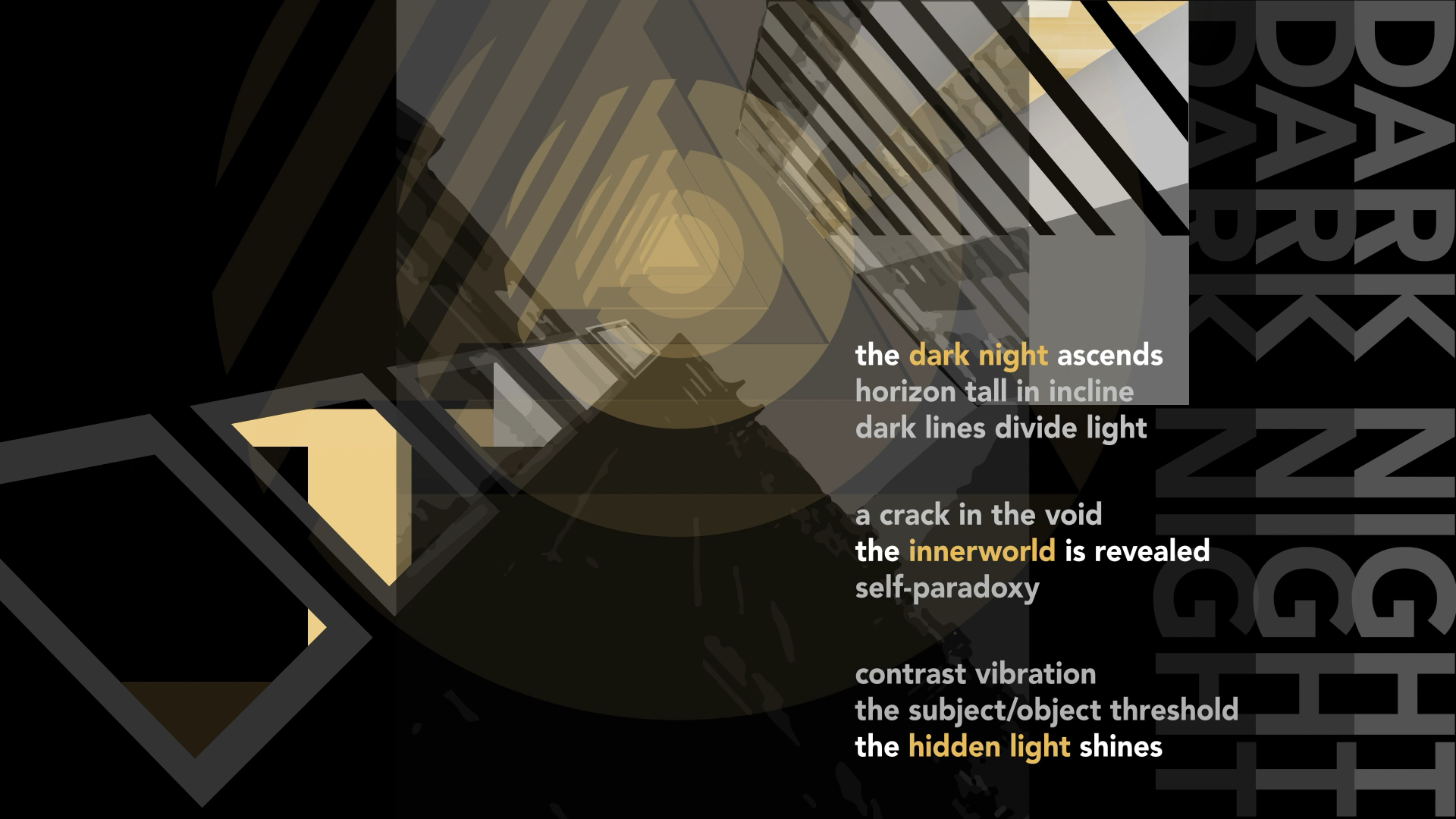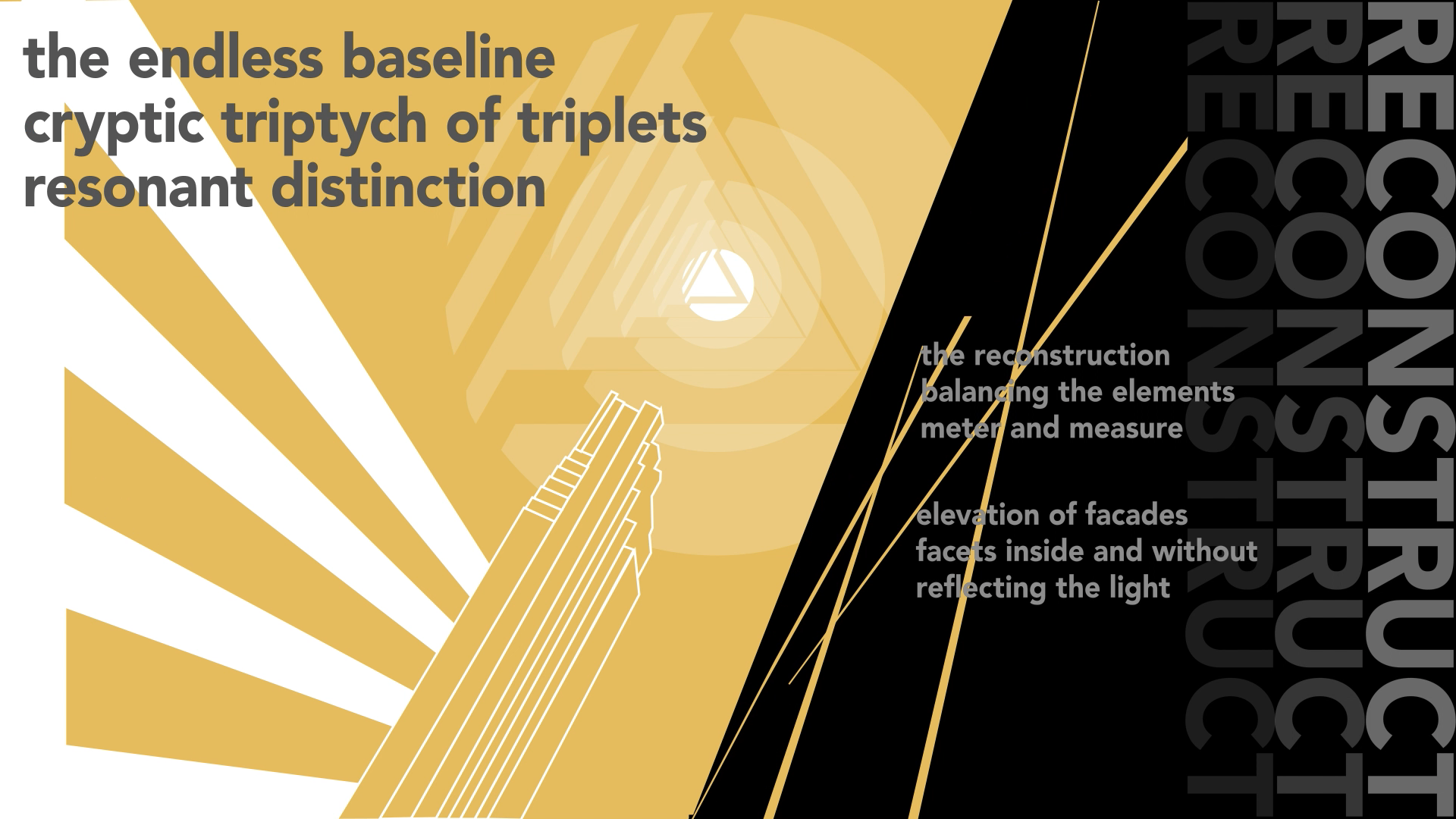
dinamico music and haiku video
Drawing inspiration from Constructivist artist Alexander Rodchenko, this project was conceived with the layouts of three posters using some of my photographs of New York CIty that feature strong inclined lines; a recurring element in Russian Constructivism. Applying the use of fundamental shapes such as triangles and circles — well-established as the foundation of modern design — I embarked on a design solution that presents historical design references, the deconstruction to root elements, and a translation in a multimedia experience. A design process about my design process. Metadesign.

setting the pattern

• logo design process • typography • color pallete

the innerworld is revealed
The second angle of Dinamico explores the philosophical Dark Night of the Soul — expressed in music and design idioms as symbolic analogy: the internalization of the history and image of these design patterns, and the subsequent deconstruction of elements down to a primary duality. The contrast of light and darkness is expressed as the threshold between the subject and the object.
Direct action on this awareness, Dinamico, takes form as the rhythmic vibration between the two, carrying this genetic material into a new integrated pattern. In the final angle of Dinamico, reconstruction and reconciliation of the original rhythmic elements ensues in a new, self-aware context of holism.

cryptic triptych of triplets
